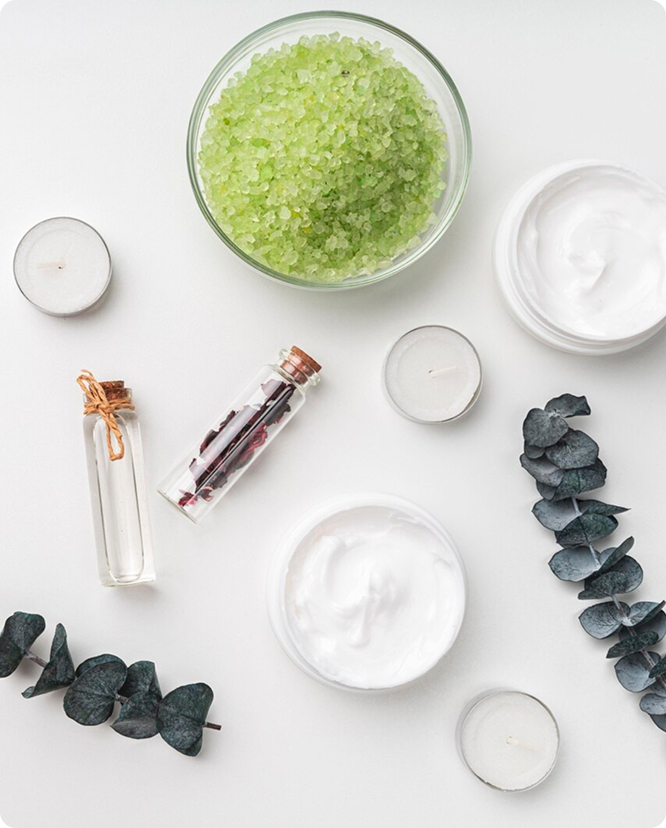The pattern is maddening: you treat your bacterial vaginosis, feel relief for a few weeks, then those familiar symptoms return. Again. And if you're in a committed relationship, you might start connecting the dots between sexual activity with your partner and BV flare-ups, leaving you wondering what's really going on.
Recurring bacterial vaginosis (BV) with the same sexual partner is more common than you might think, and it makes total sense to want to understand what's happening with your body. The good news? Recent groundbreaking research is shedding new light on why this happens and what you can actually do about it.
Let's dive into the science behind BV recurrence, explore how your partner fits into the picture, and discover evidence-based strategies to break the cycle while maintaining a healthy, satisfying relationship.
What is Bacterial Vaginosis (BV)?
Simply put, bacterial vaginosis is a common vaginal condition that happens when the natural balance of bacteria in your vagina gets thrown off [1]. Think of your vagina as having its own ecosystem – when everything's working well, beneficial Lactobacillus bacteria keep things acidic and healthy with a pH between 3.8 and 4.5 [2].
When you have BV, this delicate balance gets disrupted, and harmful anaerobic bacteria start to overgrow [3]. The result? Those telltale symptoms: unusual gray or white discharge, a fishy odor that's particularly noticeable after sex, and sometimes itching or burning.
Here's what makes BV particularly persistent: these bacteria form protective communities called biofilms that stick to the vaginal wall [4]. Think of biofilms like a bacterial fortress – they're incredibly difficult to break down, which helps explain why standard antibiotic treatments sometimes fail to provide long-term relief.
Bottom Line: BV is a microbiome imbalance where harmful bacteria overgrow and form protective biofilms, disrupting your vagina's natural acidic environment.
The Partner Connection: What's Really Happening?
Now, let's get to the heart of the question: why do you keep getting BV with the same partner? The answer involves several scientific mechanisms researchers are only now beginning to fully understand.
pH Disruption from Semen
Your vagina maintains that healthy acidic environment, but semen has a pH between 7.1 and 8.0, making it significantly more alkaline [5]. When semen enters your vagina during unprotected sex, it temporarily raises your vaginal pH, creating conditions that favor BV-associated bacteria.
While healthy vaginas typically return to their normal acidic state within hours, if your microbiome is already compromised or you're prone to BV, these repeated pH disruptions can tip the balance in favor of harmful bacteria [6].
Bacterial Transfer Between Partners
Here's where recent research gets really interesting. A groundbreaking study published in the New England Journal of Medicine in March 2025 provided the strongest evidence to date that BV can actually be sexually transmitted [7]. When male partners of women with BV were treated with antibiotics, the women's BV recurrence rate dropped dramatically – from 63% to just 35%.
This suggests that male partners can harbor BV-associated bacteria and potentially reintroduce them during sexual activity. While men don't develop BV themselves, they can carry these bacteria on their penis, under the foreskin, or in their urethral tract [8].
Biofilm Persistence
The primary culprit in BV biofilm formation is Gardnerella vaginalis, which is the predominant species in BV biofilms and is found in the vast majority of BV cases [9]. These biofilms are incredibly resilient and can potentially form not just in your vagina, but also on your partner's genital tissues. Even after successful treatment, exposure to your partner could reintroduce biofilm-forming bacteria.
Bottom Line: Your partner can contribute to BV recurrence through pH disruption from semen, bacterial transfer during sexual activity, and harboring biofilm-forming bacteria.
Important Distinctions: What BV Recurrence Doesn't Mean
Before diving into solutions, let's clear up crucial misconceptions. Recurring BV is not a sign that your partner is cheating or that either of you has an STI. While BV can be influenced by sexual activity, it's fundamentally different from sexually transmitted infections [10].
It's also not about hygiene – yours or your partner's. Over-cleaning can actually make BV worse by disrupting your vaginal microbiome further [11]. Some women are simply more prone to BV recurrence due to factors like genetics, hormone fluctuations, stress levels, and overall immune function [12].
Breaking the Cycle: Evidence-Based Prevention Strategies
1. Post-Sex Hygiene Practices
Develop a consistent post-sex routine to help your vagina return to its optimal acidic state. Urinate within 30 minutes after sex to help flush out bacteria, followed by gentle external cleansing with plain water [13].
Consider using Neycher's BV Away, formulated with lactic acid and microbiome-supporting ingredients. BV Away helps restore optimal vaginal pH and creates an environment that favors beneficial bacteria over BV-associated organisms. Using it as part of your post-sex routine can help counteract the alkalinizing effects of semen.
2. Barrier Protection
Condoms prevent semen from entering your vagina, eliminating the pH disruption factor entirely. They also reduce direct bacterial transfer between partners [14]. Consider using them strategically during times when you're more vulnerable to BV.
3. Microbiome Support
Supporting your vaginal microbiome on an ongoing basis is one of the most effective long-term strategies. Neycher's Vaginal Synbiotic+ combines probiotics with prebiotics to support a healthy vaginal ecosystem. The synbiotic approach introduces beneficial Lactobacillus strains while providing the nutrients they need to thrive and compete effectively against BV-associated bacteria [15].
4. Partner Treatment Considerations
Based on recent research, discuss partner treatment with your healthcare provider if you've had multiple BV recurrences. The study protocol involved treating male partners with both oral antibiotics (metronidazole) and topical antibiotic cream (clindamycin) [7].
5. Lifestyle Support
Managing stress, getting adequate sleep, and maintaining a balanced diet can influence your susceptibility to BV recurrence. Some studies suggest that diets rich in probiotics may support vaginal health [16].
When to Seek Medical Care
Seek medical attention if you experience BV symptoms more than three times in a year, if symptoms don't improve with treatments, or if you develop new symptoms like pelvic pain or fever [17]. It's also important to get proper testing to confirm that what you're experiencing is actually BV and not another condition.
The Takeaway
Recurring BV with the same partner usually involves pH disruption from semen, potential bacterial transfer, biofilm persistence, and individual susceptibility to microbiome imbalances. The key is taking a comprehensive approach that addresses multiple factors simultaneously – supporting your microbiome with products like Neycher's Vaginal Synbiotic+, using targeted treatments like BV Away when needed, implementing smart post-sex hygiene practices, and working with your healthcare provider.
Remember, recurring BV is a common medical issue, not a reflection of anything you're doing wrong. With the right combination of science-backed strategies and patience, most women can significantly reduce their BV recurrence rate and enjoy better vaginal health overall.
This article is for educational purposes only and is not intended to replace professional medical advice. Always consult with a healthcare provider for personalized guidance about your vaginal health concerns.
References
[1] Centers for Disease Control and Prevention. (2023). Bacterial Vaginosis - CDC Fact Sheet. https://www.cdc.gov/std/bv/stdfact-bacterial-vaginosis.htm
[2] American College of Obstetricians and Gynecologists. (2023). Bacterial Vaginosis: ACOG Practice Bulletin. https://www.acog.org/clinical/clinical-guidance/practice-bulletin/articles/2020/05/bacterial-vaginosis
[3] Onderdonk, A. B., Delaney, M. L., & Fichorova, R. N. (2016). The Human Microbiome during Bacterial Vaginosis. Clinical Microbiology Reviews, 29(2), 223-238. https://journals.asm.org/doi/10.1128/CMR.00075-15
[4] Swidsinski, A., Mendling, W., Loening-Baucke, V., et al. (2008). An adherent Gardnerella vaginalis biofilm persists on the vaginal epithelium after standard therapy with oral metronidazole. American Journal of Obstetrics and Gynecology, 198(1), 97.e1-97.e6. https://pubmed.ncbi.nlm.nih.gov/18166617/
[5] Owen, D. H., & Katz, D. F. (2005). A review of the physical and chemical properties of human semen. Journal of Andrology, 26(4), 459-469. https://pubmed.ncbi.nlm.nih.gov/15955884/
[6] Boskey, E. R., Cone, R. A., Whaley, K. J., & Moench, T. R. (2001). Origins of vaginal acidity. Human Reproduction, 16(9), 1809-1813. https://pubmed.ncbi.nlm.nih.gov/11527880/
[7] Vodstrcil, L. A., Plummer, E. L., Fairley, C. K., et al. (2025). Male-Partner Treatment to Prevent Recurrence of Bacterial Vaginosis. New England Journal of Medicine, 392(10), 947-957. https://www.nejm.org/doi/full/10.1056/NEJMoa2405404
[8] Zozaya, M., Ferris, M. J., Siren, J. D., et al. (2016). Bacterial communities in penile skin, male urethra, and vaginas of heterosexual couples. Microbiome, 4, 16. https://microbiomejournal.biomedcentral.com/articles/10.1186/s40168-016-0161-6
[9] Machado, A., Castro, J., Cereija, T., et al. (2013). Gardnerella vaginalis biofilms: implications for bacterial vaginosis development. FEMS Immunology & Medical Microbiology, 65(2), 418-428. https://pubmed.ncbi.nlm.nih.gov/23057775/
[10] Fredricks, D. N., Fiedler, T. L., & Marrazzo, J. M. (2005). Molecular identification of bacteria associated with bacterial vaginosis. New England Journal of Medicine, 353(18), 1899-1911. https://pubmed.ncbi.nlm.nih.gov/16267321/
[11] Brown, S. E., Schwartz, J. A., Robinson, C. K., et al. (2019). The vaginal microbiota and behavioral factors associated with genital Candida albicans detection. Sexually Transmitted Diseases, 46(11), 753-758. https://pubmed.ncbi.nlm.nih.gov/31356592/
[12] Ravel, J., Gajer, P., Abdo, Z., et al. (2011). Vaginal microbiome of reproductive-age women. Proceedings of the National Academy of Sciences, 108(Supplement 1), 4680-4687. https://www.pnas.org/doi/10.1073/pnas.1002611107
[13] Hooton, T. M., Scholes, D., Hughes, J. P., et al. (1996). A prospective study of risk factors for symptomatic urinary tract infection in young women. New England Journal of Medicine, 335(7), 468-474. https://pubmed.ncbi.nlm.nih.gov/8672152/
[14] Hutchinson, K. B., Kip, K. E., & Ness, R. B. (2007). Condom use and its association with bacterial vaginosis. Epidemiology, 18(6), 702-708. https://pubmed.ncbi.nlm.nih.gov/18062063/
[15] Reid, G., Jass, J., Sebulsky, M. T., & McCormick, J. K. (2003). Potential uses of probiotics in clinical practice. Clinical Microbiology Reviews, 16(4), 658-672. https://journals.asm.org/doi/10.1128/CMR.16.4.658-672.2003
[16] Thoma, M. E., Gray, R. H., Kiwanuka, N., et al. (2011). The short-term variability of bacterial vaginosis diagnosed by Nugent Gram stain criteria. Sexually Transmitted Diseases, 38(2), 111-116. https://pubmed.ncbi.nlm.nih.gov/20921931/
[17] Workowski, K. A., Bachmann, L. H., Chan, P. A., et al. (2021). Sexually transmitted infections treatment guidelines, 2021. MMWR Recommendations and Reports, 70(4), 1-187. https://www.cdc.gov/mmwr/volumes/70/rr/rr7004a1.htm








.png)